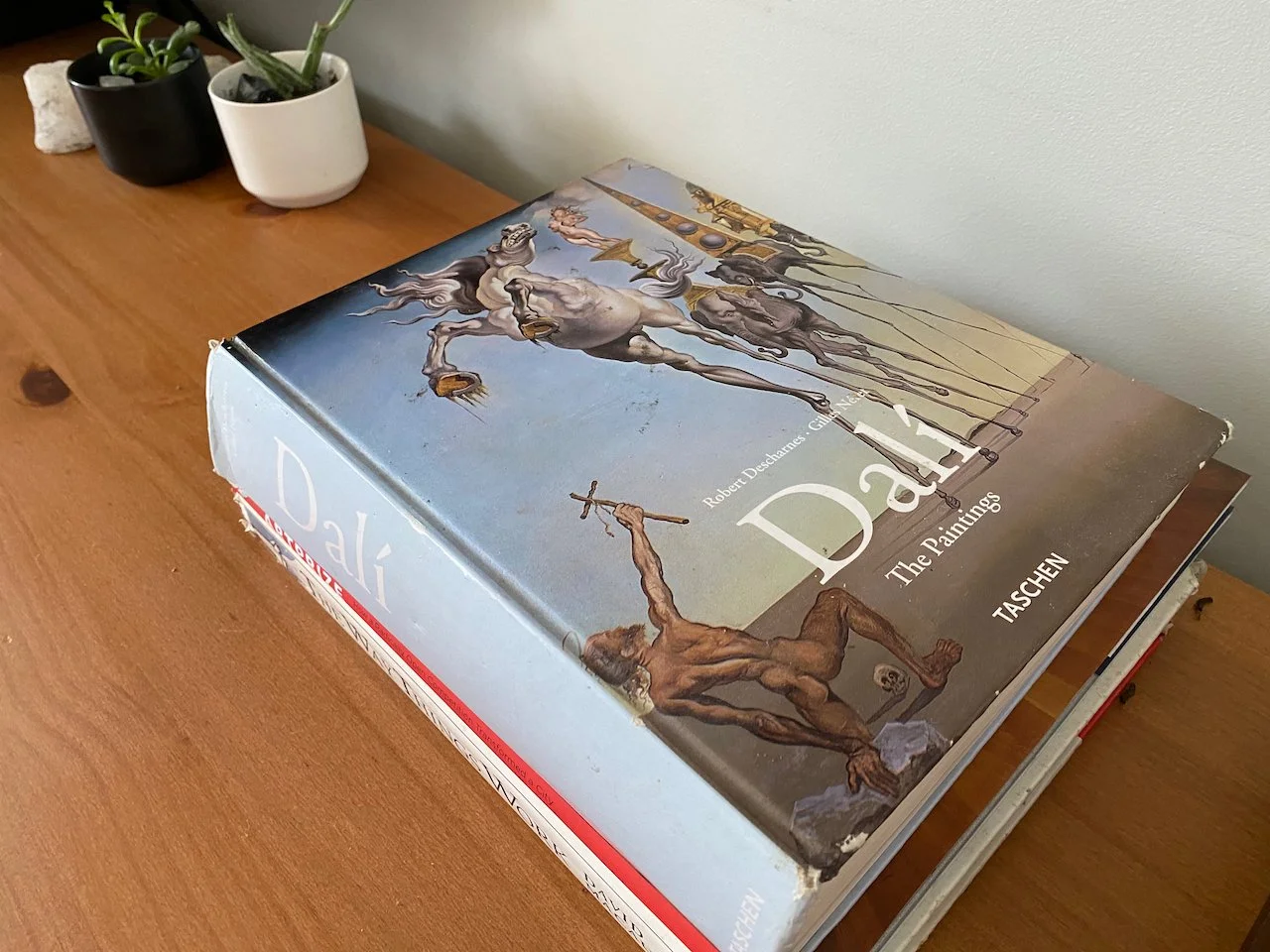I was a bit of a weirdo in high school. Sure, I played sports and considered my friends the “cool kids”, but I also went for countless walks at night alone and always felt like I was a bit of an odd duck amongst the rural farm kids. I doubt I was any odder than the next angst-prone, weird-interest teenager, but in rural South Dakota, I felt like I stuck out at a particularly awkward angle.
Awkward and angsty.
One of the points of divergence from my peers was my interest in art. From a young age, I’d love to draw and received copious (too much?) amounts of praise from my parents and teachers and peers for my ability to draw cougars or ninja turtles or my 5th Grade teacher as a giant fire-breathing dragon (sorry Miss Murphy). My love of drawing has always been there and every page of notes I’ve ever taken in class has doodles filling the margins.
It was during these formative years that I decided that I needed to study some famous artists. My high school had 48 students TOTAL so, needless to say, we didn’t have an art class to speak of. My formal art education would eventually begin in college, but as a teenager, I decided that I needed to take matters into my own hands. Not that I stopped hanging out with my friends and quit sports and ceased chasing girls to stay home and devote my entire existence to art. No, in a much more practical and simple first step, I asked for a book about Salvado Dalí for Christmas.
My Uncle Allen had drawn my name in our annual Stoner family Christmas present bonanza and he went out and bought the biggest damn Dalí book he could find. I unwrapped the weighty present to discover “Dalí” in big white letters layered over The Temptation of St. Anthony on the glossy cover. The moment that I saw this painting, it took my breath away. I remember staring in awe at the magnificence of the composition: the defiant strength of the figure of St. Anthony positioned nude and lanky in the foreground, thrusting a makeshift cross to the heavens. The parade of incredibly long-limbed elephants led by a horse reared on its haunches, marching through the desert toward St. Anthony with their wondrous temptations on their backs. The glow of light in the sky, the bleak desert landscape, the dramatic shadows: Dalí shows his masterful eye with every stroke.
I still own the Dalí book and it sits on a table in our living room.
To my inexperienced eye, this moment was a revolution. I didn’t realize that you could twist realistic art in such an odd and fantastic way. I had never thought to play with the proportions of the figures in that manner and was simply dumbstruck by its effectiveness. Long legs. LONG LEGS! How spectacularly they add to the power these animals impose upon the kneeling man! They’re lumbering around in the clouds, for God’s sake! In this very moment, I had discovered surrealism and seeing this painting forever altered my path as an artist.
The Temptation of St. Anthony | Salvador Dalí | 1946
Reenacting the look of shock I had as a high school kid discovering surrealism.
The background story of The Temptation of St. Anthony is actually quite fascinating. St. Anthony was a Christian monk from Egypt who lived A.D. 251-356. After inheriting a sizable acreage from his parents at age 20, Anthony was inspired by the Scripture (Matthew 19:21) to sell all of his land and belongings and pursue Christ. He lived for many years in solitude in the deserts of Eastern Egypt, at one point taking refuge in an abandoned Roman fort for 20 years with little to no contact with the outside world (visitors would throw food over the walls to him). After emerging from this isolation in fine form, Anthony developed a devout following of others seeking to live a simple, monastic life in service to God. Toward the end of his life, his personal history was written including the stories of the many temptations he faced during his time of desert solitude. Most notably, St. Anthony told of the boredom, depression, and visions of women he was tempted by that he was able to overcome through prayer.
Fast forward 1,600 years and a film production company is holding a contest. The year is 1946 and they are making a movie that will be all in black and white except for one painting depicting the story of St. Anthony’s temptation, which will be in full color. They reach out to twelve contemporary artists and pay them $500 each to produce a painting inspired by this theme. This list includes Dalí and it is the only art contest he ever enters. After creating his masterpiece at his studio in New York over the course of three days, Dalí loses the contest to Max Ernst with his rather grotesque rendition. He lost! Regardless, his version has come to be known as one of his most impactful and recognizable masterpieces. It is also the one that made me a life-long fan of Dalí and sent me on my path to surrealism. (Another version of the temptation by a young Michelangelo is also most excellent).
The Temptation of Saint Anthony | Max Ernst | 1945
The Torment of Saint Anthony | Michelangelo Buonarroti | 1487
Have I seen this painting in person in the twenty years since? Sadly, no. But maybe this is the year I make to Brussels to marvel at it in the flesh. However, on our latest run of shows in Florida, the family and I did partake in a visit to the Salvador Dalí Museum in St. Petersburg.
This beautiful building houses over 300 of Dalí’s paintings, drawings, and sculptures and it’s a real gem. To see his work in person is to be transported and the spaces they’ve created encourage the journey. The strongest impression I gathered from walking the museum is how Dalí’s visual language is both soothing and surprising. He is able to capture such vivid shifts of light and radiance while using these tranquil backdrops as a launch pad for his wild imagery. Dalí plays with you as the viewer and it is this vulnerability that is perhaps his most alluring quality.
One of Dalí’s works at the museum.
The melting clocks were Orin’s favorite.
There are many quotes from Dalí sprinkled throughout the museum but one stuck out to me:
”A true artist is not one who is inspired but one that inspires others.”
Twenty years since I had seen his work for the first time unwrapping a Christmas present in my grandparent’s basement, Dalí still holds as much sway as ever. I owe him a lot of gratitude for his influence on my work. And I hope to pay his inspiration forward to others as I paint my way through my adventures in art, long legs and all.
This Dalí mask we picked up in Barcelona
has given us a lot of laughs.
Dalí inspired closed storefront mural in Valencia. It’s the year of Dalí for this family.











